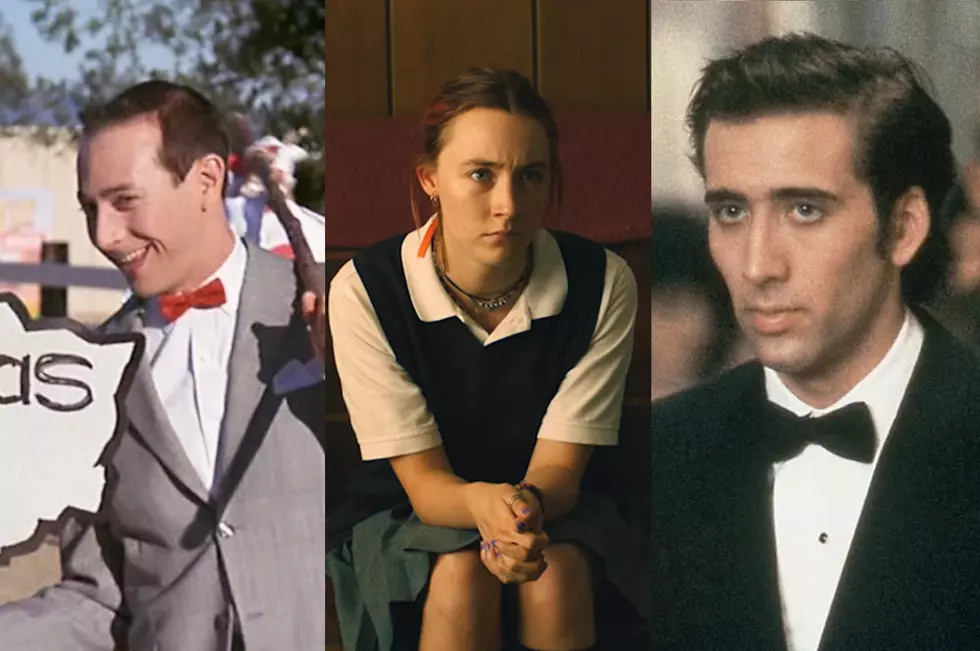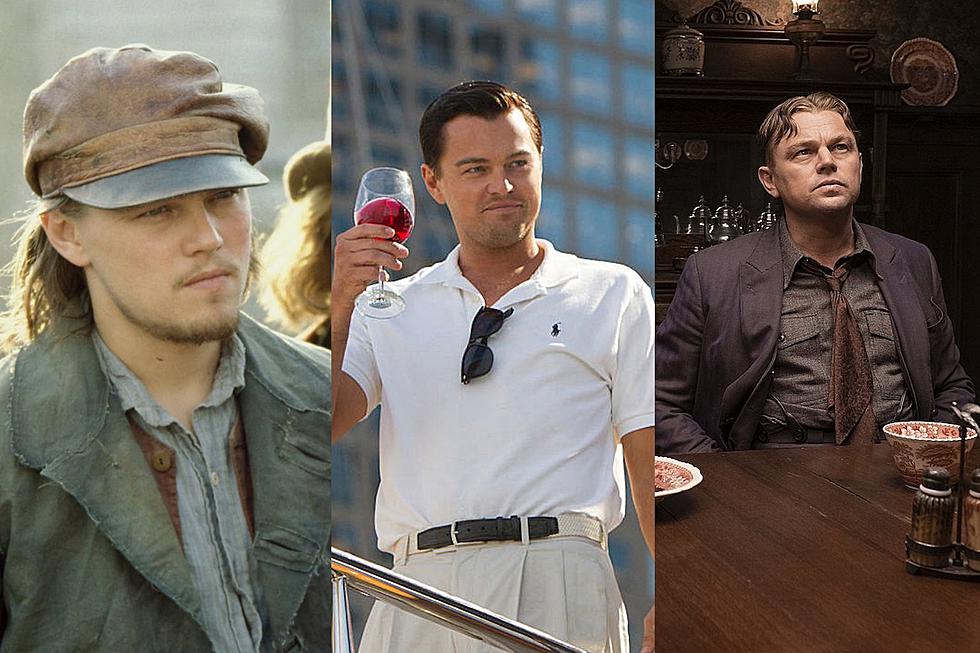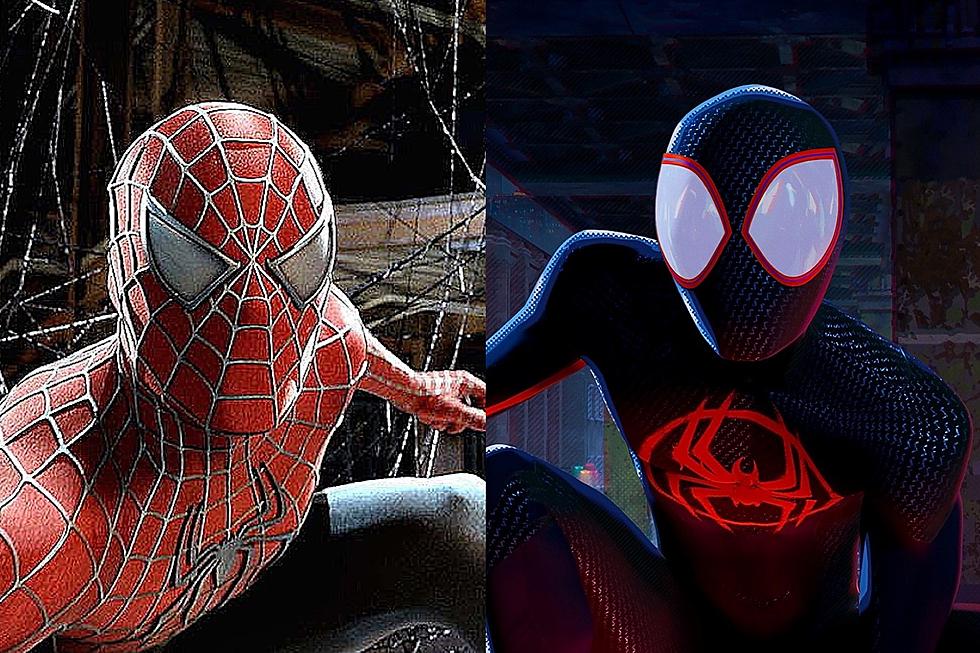
Worst to First: Every ‘Texas Chainsaw Massacre,’ Ranked
This Friday brings the VOD release of Leatherface, a blood-soaked, 1960s-set prequel to director Tobe Hooper’s 1974 horror classic The Texas Chain Saw Massacre. The new movie connects Hooper’s original to the recent 2013 reboot Texas Chainsaw 3D, but most definitely does not have anything to do with any other film made in the ‘90s and ‘00s… and especially not the one from 1990 that’s already called Leatherface. That’s because few horror franchises have histories or continuities so convoluted as this one, where each new entry seems expressly designed to bury what came before. Over the decades, the Chainsaw series has suffered from a lack of unified creative vision, and a general misunderstanding of what made the original an all-timer.
The first Massacre told the story of several shaggy hippies who stumble across a creepy house in the sweltering countryside, populated by a cabal of cannibals that includes a hulking, inarticulate brute called “Leatherface” (who, like the real life serial killer Ed Gein, wears human skin as a mask). Hooper’s underrated 1986 sequel The Texas Chainsaw Massacre 2 is more cartoonish and violent, but also delves more into the quirks of Leatherface’s clan, the Sawyers. The films that have sporadically followed Hooper’s have tended to swing between the parameters he established: They’re either about unsuspecting youngsters who knock on the wrong door, or they’re about the twisted legacy of one notorious Texas family.
They’re also generally dismissed as disposable. But are these various sequels, prequels, reboots, and re-imaginings really all the bad? With Halloween looming — and in honor of the surprisingly pretty good new Leatherface — here’s an update on which Chainsaws are still safe to fire up, and which should be left in the shed to rust. From worst to first, here they are:
8. The Texas Chainsaw Massacre (2003)
The bitter dregs of this franchise — which, dispiritingly, is also the most successful at the box office. The 2003 Texas Chainsaw Massacre arrived toward the beginning of the 21st century horror remake craze, and aimed to be a restart for the series, with a larger narrative plan in mind. Though still set in the early ’70s, the rebooted Chainsaw (with no gap between the words “chain” and “saw”) changes the name of the Sawyers to the Hewitts, and casts R. Lee Ermey as the deranged head-of-household who has organized his backwoods relations into a tight-knit cannibal cult. The movie made so much money that the producers followed it up with 2006 prequel, set in 1969, bringing back both Ermey and (as Leatherface) Andrew Bryniarski.
7. The Texas Chainsaw Massacre: The Beginning (2006)
Though these Chainsaws are meant to shore up the Leatherface mythology, they’re both low on plot and high on violence, taking a handful of anachronistically buff and stylish young folks (played by the likes of Matt Bomer, Jordana Brewster, Eric Balfour, and Jessica Biel), and watching as they get clubbed, stabbed, and flayed. Marcus Nispel and Jonathan Liebesman — who helmed the 2003 film and the 2006, respectively — pay homage to Hooper’s original by rehiring John Larroquette as the narrator for their opening and closing sequences, and they bring back the usual Massacre locations of gas stations, slaughterhouses, BBQ joints, and disgusting dinner tables. But both directors also get way too nutty with their visuals, using distracting camera moves and arty angles. For the most part, both of these films are dull, exhausting, and devoid of any interesting or original ideas. Only fleetingly do they have anything pertinent to add to the franchise. They needed more moments like the one early in the The Texas Chainsaw Massacre, when one of the Hewitts says something that echoes the whole series’ view of both Texas and chainsaw massacres alike: “What you do is your own business.”
6. Leatherface: The Texas Chainsaw Massacre III (1990)
Hollywood suffered a horror drought as the ’80s gave way to the ’90s, with walking nightmares like Jason Voorhees, Freddy Krueger, Michael Myers, and Chucky becoming cartoonish super-villains, shuffling through interchangeable sequels. It was in this spirit of safely exploiting the familiar that New Line Cinema licensed Leatherface, and stuck him a tedious Chain Saw retread that failed to break through with general movie audiences or genre aficionados.
Leatherface: The Texas Chainsaw Massacre III is primarily notable today for two of its stars: Dawn of the Dead fan-favorite Ken Foree, who plays a heroic local, and Viggo Moretensen, who’s the brains of the Sawyer family. The movie follows the lead of Hooper’s own sequel by coating the screen with stomach-turning goo ... so much so that New Line had trouble with both the MPAA and the British censors. III lacks the best Chainsaws’ point-of-view, though. Instead it just takes the familiar pieces of the first two pictures — rooms strewn with animal remains, Leatherface’s sliding metal door, an encounter between the victims-to-be and a creepy gas station attendant, and so on — and renders them in the hideous early ’90s horror trappings of bright lighting and modern rock soundtracks.
5. Texas Chainsaw 3D (2013)
The new Leatherface is part of a larger effort to streamline this franchise. That project began with Texas Chainsaw 3D, which is simultaneously a “30 years later” sequel to The Texas Chainsaw Massacre 2 and a virtual beat-for-beat remake of the original. Alexandra Daddario (who really should be a bigger star by now) plays a long-lost Sawyer scion, who inherits the old family estate, and finds that her cousin Leatherface comes pre-installed. Essentially, this film flips the script on the ’74 Massacre, with a Sawyer now as the tourist in over her head and the local lawman (played by Scott Eastwood) as the obsessed enemy with a network of allies.
Recreating the plot of the original with new characters and added backstory doesn’t really improve it much, and Texas Chainsaw 3D is too expensive-looking to generate the same kind of queasy terror that Hooper managed on a dime decades earlier. But in his effort to make the best use of the third dimension, director John Luessenhop does deliver the series’ second-scariest entry, wherein dangerous folks keep leaping out of the inky darkness while wielding sharp tools. This one is a solid horror movie — if only a middling Chainsaw movie.
4. The Texas Chainsaw Massacre: The Next Generation (1994)
Thanks to its accidentally A-list cast, The Next Generation is probably the second-most famous of the series — and is frequently and mistakenly presumed to be worst. A young Renée Zellwegger plays a high-school misfit who encounters car trouble with her friends on prom night, and subsequently lands in the clutches of a sadistic tow-truck driver played by Matthew McConaughey. Zellwegger and McConaughey made the film in 1994 when they were basically unknowns, and then it sat on a shelf for three years before finally dribbling out into the world after the two became famous. This wasn’t one of those deals where a couple of cameo roles were overhyped on the VHS box, either. The two stars are onscreen throughout most of the movie.
Written and directed by the first film’s co-screenwriter Kim Henkel, the movie originally known as The Return of the Texas Chainsaw Massacre is better than its rep, in part because the two leads give impressively full performances. Also, Henkel had an actual vision for the picture. This film plays rougher than most — with McConaughey doing an early version of his shockingly abusive Killer Joe character — and it’s hampered by some dreary mid-‘90s horror movie handicaps, like a crummy soundtrack and a flat look. But the dialogue is dotted with colorful Texas-isms, Leatherface’s cross-dressing becomes a surprisingly large and poignant element in the plot, and the story lands in a strange place that suggests the Sawyer family is part of a secret international social experiment. If nothing else, The Next Generation isn’t forgettable.
3. Leatherface (2017)
The most recent Chainsaw movie may be the most ambitious, digging into the grubby past of the Sawyer family to reveal how a sweet kid named Jedidiah was reborn as a howling monster after being institutionalized. Featuring a steely performance by Lili Taylor as the Sawyer’s stubborn matriarch, Leatherface is as much of a southern gothic psychodrama as it is a slasher picture. And it has a sense of scope, too, hopping from a crumbling farmhouse to an insane asylum to the Texas backroads.
Is the pile-up of plot and mash-up of B-movie tropes more than this franchise needs? Yeah, probably. But given how often the post-Hooper Chainsaw-makers just copied the original, it’s refreshing to see a version of the film that follows through on the first two movies’ idea of a deeper evil, born of how Leatherface and his siblings were raised.
2. The Texas Chainsaw Massacre 2 (1986)
At the time it came out, The Texas Chainsaw Massacre 2 was viewed as a slicked-up letdown, sporting a professional polish but lacking guts. (Figurative guts, that is; the sequel’s ten times gorier than its predecessor.) Time has been kind to the movie, though, which now plays like a fresh take on the material, and more in line with the perpetually underrated Hooper’s larger filmography. Working from a screenplay by L.M. Kit Carson (who also wrote Wim Wenders’ masterpiece Paris, Texas), Hooper took a hefty stack of Cannon Films’ money and used it build elaborate sets and costumes, making Leatherface and the Sawyer family’s secret lair into a sprawling complex populated by an eclectic batch of proud Southern rebels.
There’s an element of sly social commentary to Chainsaw 2, which imagines the Sawyers as a deeply ingrained Texas institution, going about their murderous business as a kind of local open secret. Not even a conscientious cop played by Dennis Hopper or a crusading reporter played by Caroline Williams can prevail against this clan of sickos, who at times seem to represent a twisted ideal of American freedom. Their sense of entitlement is as scary as their arsenal of pointy objects.
1. The Texas Chain Saw Massacre (1974)
Ads for the original Massacre warned, “After you stop screaming, you’ll start talking about it.” This was the producers’ cocky way of defending their artistic merit against any local censor boards that might want to ban the film based on its title alone. But the tag-line proved prescient, too. The Texas Chain Saw Massacre isn’t just remembered today for the funny way it spells “chainsaw.” Hooper and his crew combined genuine cinematic chops with harrowing realism — with the latter dominating thanks to a shoestring budget and appallingly unsafe working conditions. The result is a heart-stopping motion picture that audiences even now find as compelling as it is brutal. It’s a hard movie to look away from, even at its most unpleasant.
Since its debut, The Texas Chain Saw Massacre has prompted cinema scholars, cultural commentators, and horror-hounds alike to take a whack at explaining what makes it all work so fiendishly well. Prime candidates include Hooper and co-writer Kim Henkel’s blackly comic nihilism, and cinematographer Daniel Pearl’s knack for finding strikingly lit angles on the carnage. Mostly though, the film is just relentless. The killers move fast, with a viciousness so total that it’s almost like they’ve been lying in wait all along — not just for the victims in this movie, but for all of us.
Gallery - The Best Horror Movie Posters:
More From ScreenCrush









